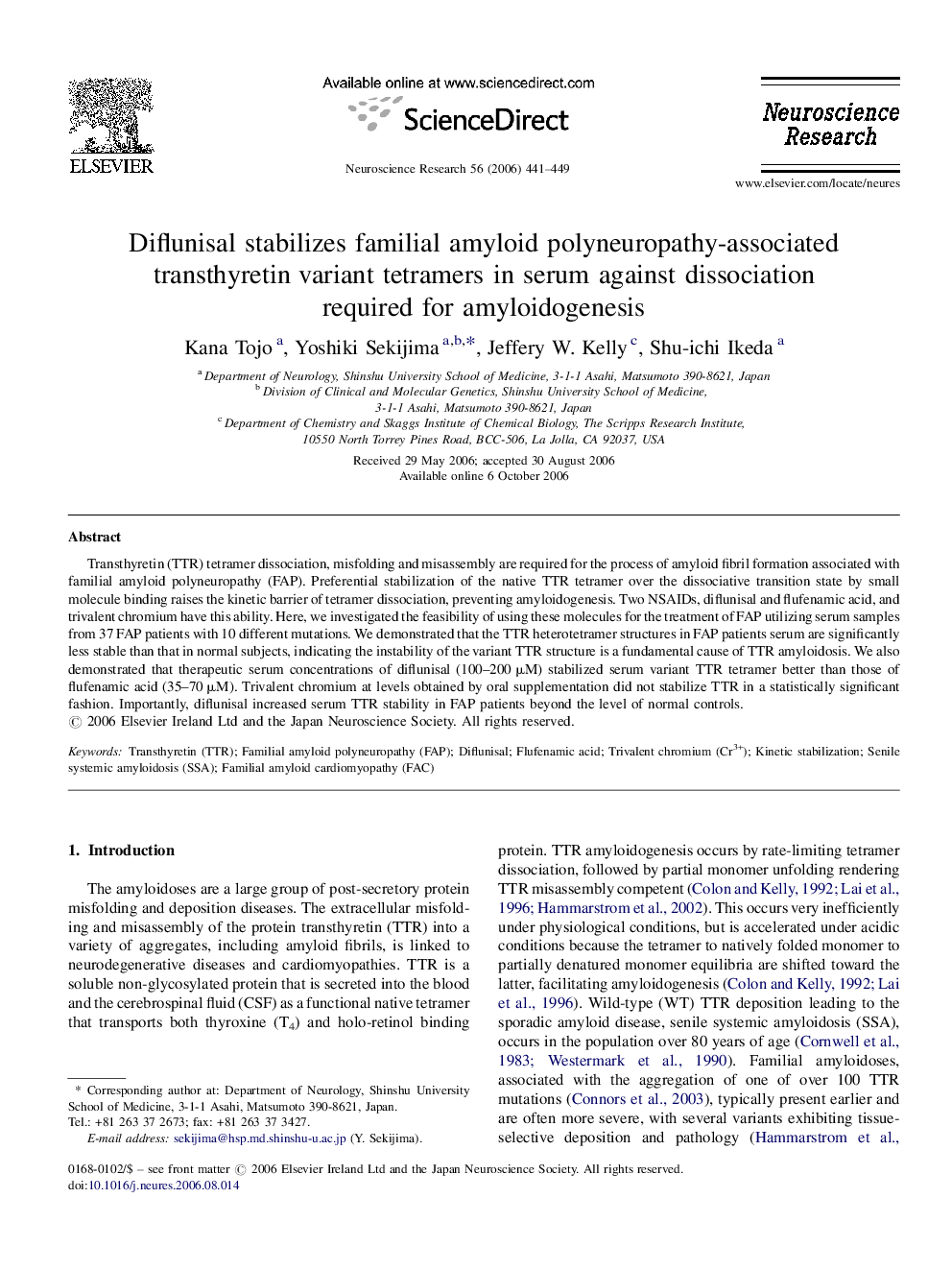| Article ID | Journal | Published Year | Pages | File Type |
|---|---|---|---|---|
| 4352753 | Neuroscience Research | 2006 | 9 Pages |
Transthyretin (TTR) tetramer dissociation, misfolding and misassembly are required for the process of amyloid fibril formation associated with familial amyloid polyneuropathy (FAP). Preferential stabilization of the native TTR tetramer over the dissociative transition state by small molecule binding raises the kinetic barrier of tetramer dissociation, preventing amyloidogenesis. Two NSAIDs, diflunisal and flufenamic acid, and trivalent chromium have this ability. Here, we investigated the feasibility of using these molecules for the treatment of FAP utilizing serum samples from 37 FAP patients with 10 different mutations. We demonstrated that the TTR heterotetramer structures in FAP patients serum are significantly less stable than that in normal subjects, indicating the instability of the variant TTR structure is a fundamental cause of TTR amyloidosis. We also demonstrated that therapeutic serum concentrations of diflunisal (100–200 μM) stabilized serum variant TTR tetramer better than those of flufenamic acid (35–70 μM). Trivalent chromium at levels obtained by oral supplementation did not stabilize TTR in a statistically significant fashion. Importantly, diflunisal increased serum TTR stability in FAP patients beyond the level of normal controls.
